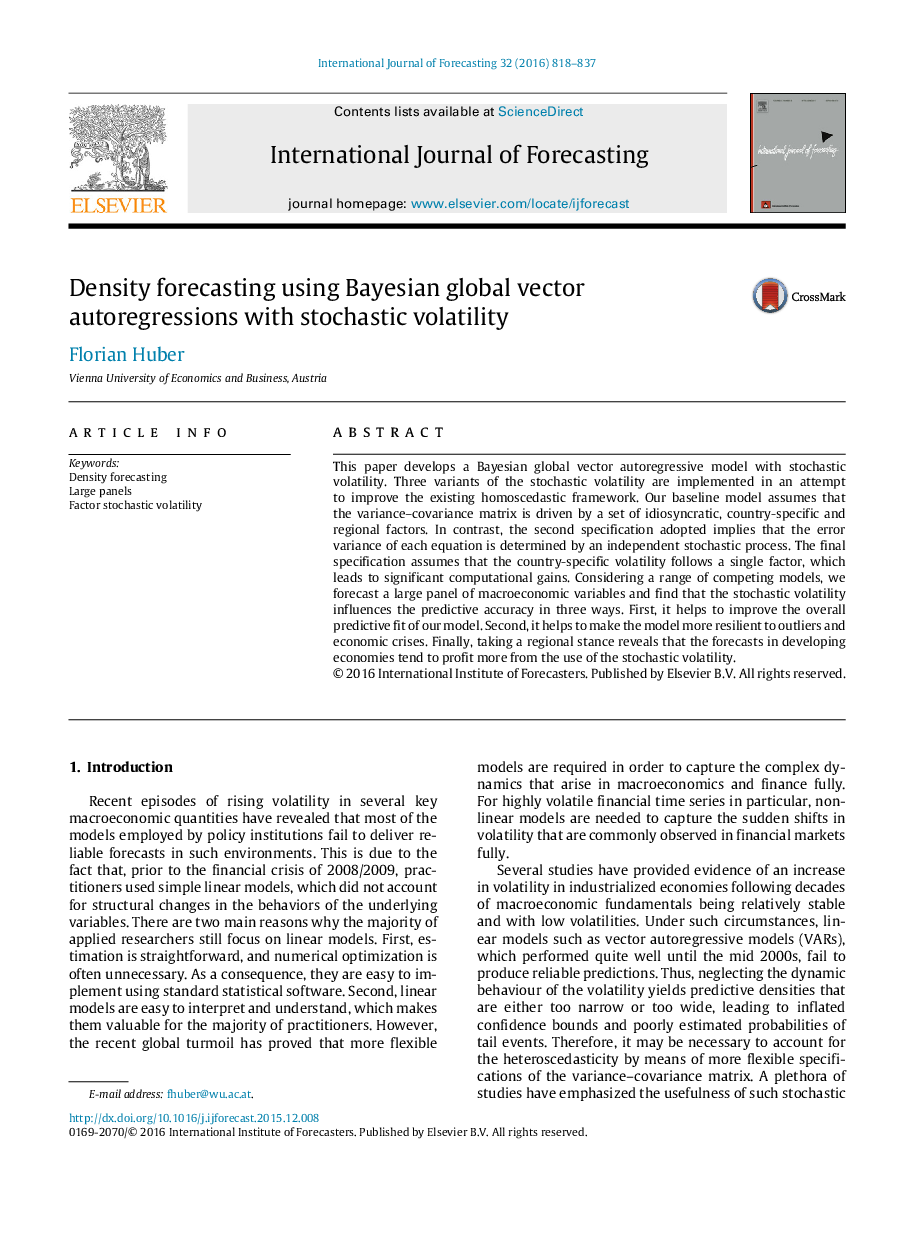| Article ID | Journal | Published Year | Pages | File Type |
|---|---|---|---|---|
| 7408187 | International Journal of Forecasting | 2016 | 20 Pages |
Abstract
This paper develops a Bayesian global vector autoregressive model with stochastic volatility. Three variants of the stochastic volatility are implemented in an attempt to improve the existing homoscedastic framework. Our baseline model assumes that the variance-covariance matrix is driven by a set of idiosyncratic, country-specific and regional factors. In contrast, the second specification adopted implies that the error variance of each equation is determined by an independent stochastic process. The final specification assumes that the country-specific volatility follows a single factor, which leads to significant computational gains. Considering a range of competing models, we forecast a large panel of macroeconomic variables and find that the stochastic volatility influences the predictive accuracy in three ways. First, it helps to improve the overall predictive fit of our model. Second, it helps to make the model more resilient to outliers and economic crises. Finally, taking a regional stance reveals that the forecasts in developing economies tend to profit more from the use of the stochastic volatility.
Keywords
Related Topics
Social Sciences and Humanities
Business, Management and Accounting
Business and International Management
Authors
Florian Huber,
